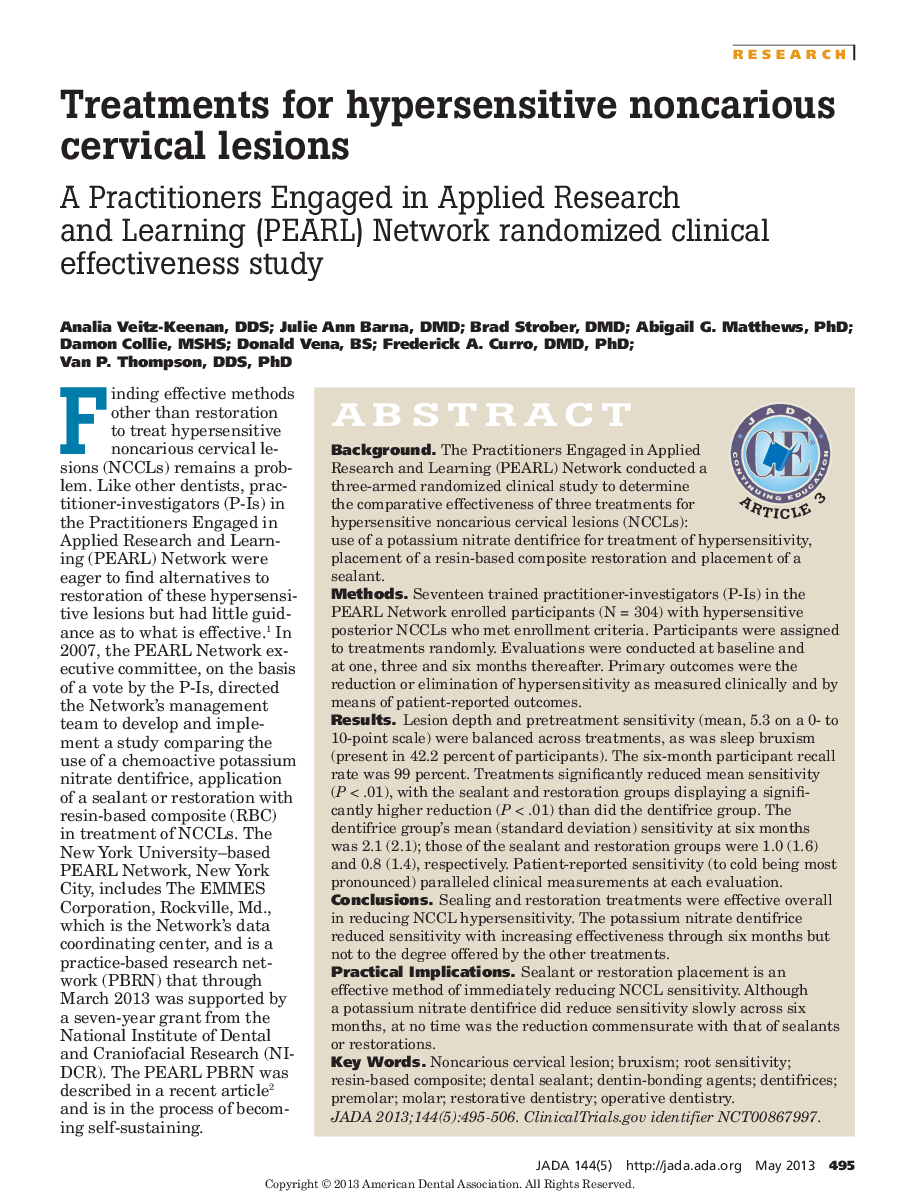| Article ID | Journal | Published Year | Pages | File Type |
|---|---|---|---|---|
| 3137612 | The Journal of the American Dental Association | 2013 | 12 Pages |
ABSTRACTBackgroundThe Practitioners Engaged in Applied Research and Learning (PEARL) Network conducted a three-armed randomized clinical study to determine the comparative effectiveness of three treatments for hypersensitive noncarious cervical lesions (NCCLs): use of a potassium nitrate dentifrice for treatment of hypersensitivity, placement of a resin-based composite restoration and placement of a sealant.MethodsSeventeen trained practitioner-investigators (P-Is) in the PEARL Network enrolled participants (N = 304) with hypersensitive posterior NCCLs who met enrollment criteria. Participants were assigned to treatments randomly. Evaluations were conducted at baseline and at one, three and six months thereafter. Primary outcomes were the reduction or elimination of hypersensitivity as measured clinically and by means of patient-reported outcomes.ResultsLesion depth and pretreatment sensitivity (mean, 5.3 on a 0- to 10-point scale) were balanced across treatments, as was sleep bruxism (present in 42.2 percent of participants). The six-month participant recall rate was 99 percent. Treatments significantly reduced mean sensitivity (P < .01), with the sealant and restoration groups displaying a significantly higher reduction (P < .01) than did the dentifrice group. The dentifrice group’s mean (standard deviation) sensitivity at six months was 2.1 (2.1); those of the sealant and restoration groups were 1.0 (1.6) and 0.8 (1.4), respectively. Patient-reported sensitivity (to cold being most pronounced) paralleled clinical measurements at each evaluation.ConclusionsSealing and restoration treatments were effective overall in reducing NCCL hypersensitivity. The potassium nitrate dentifrice reduced sensitivity with increasing effectiveness through six months but not to the degree offered by the other treatments.Practical ImplicationsSealant or restoration placement is an effective method of immediately reducing NCCL sensitivity. Although a potassium nitrate dentifrice did reduce sensitivity slowly across six months, at no time was the reduction commensurate with that of sealants or restorations.
